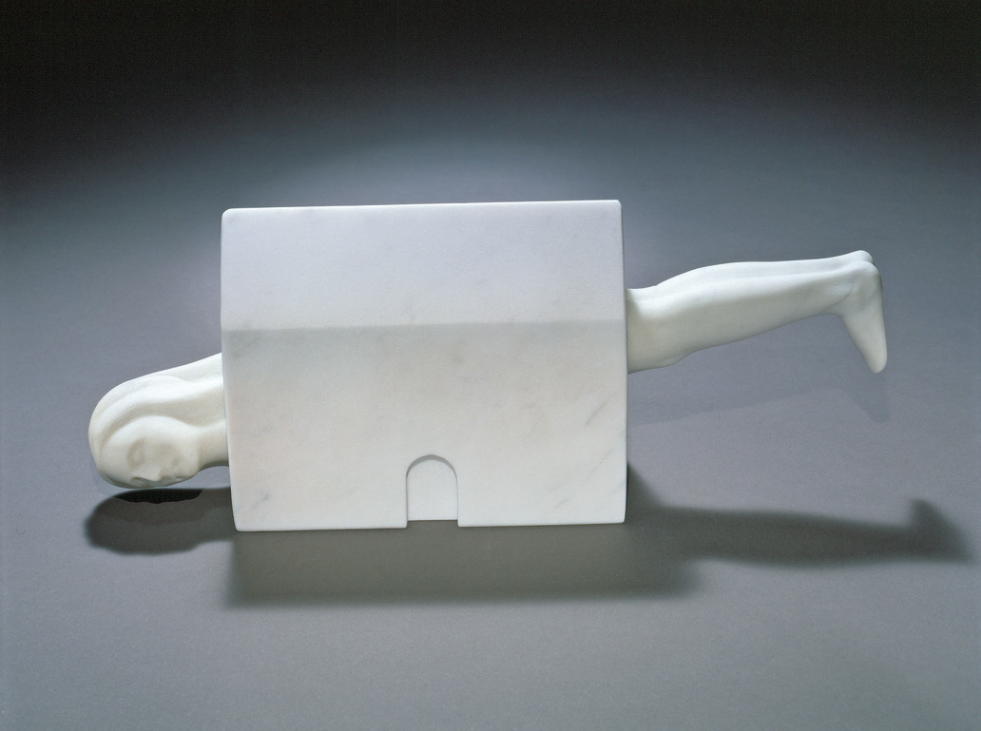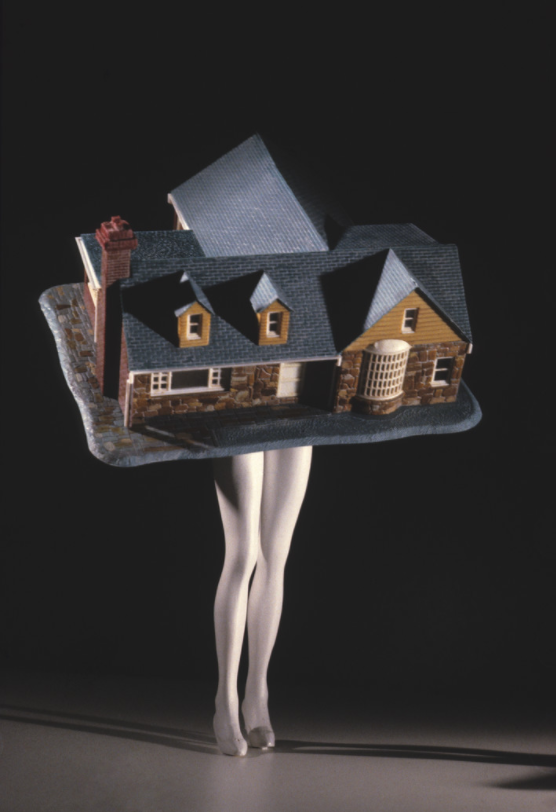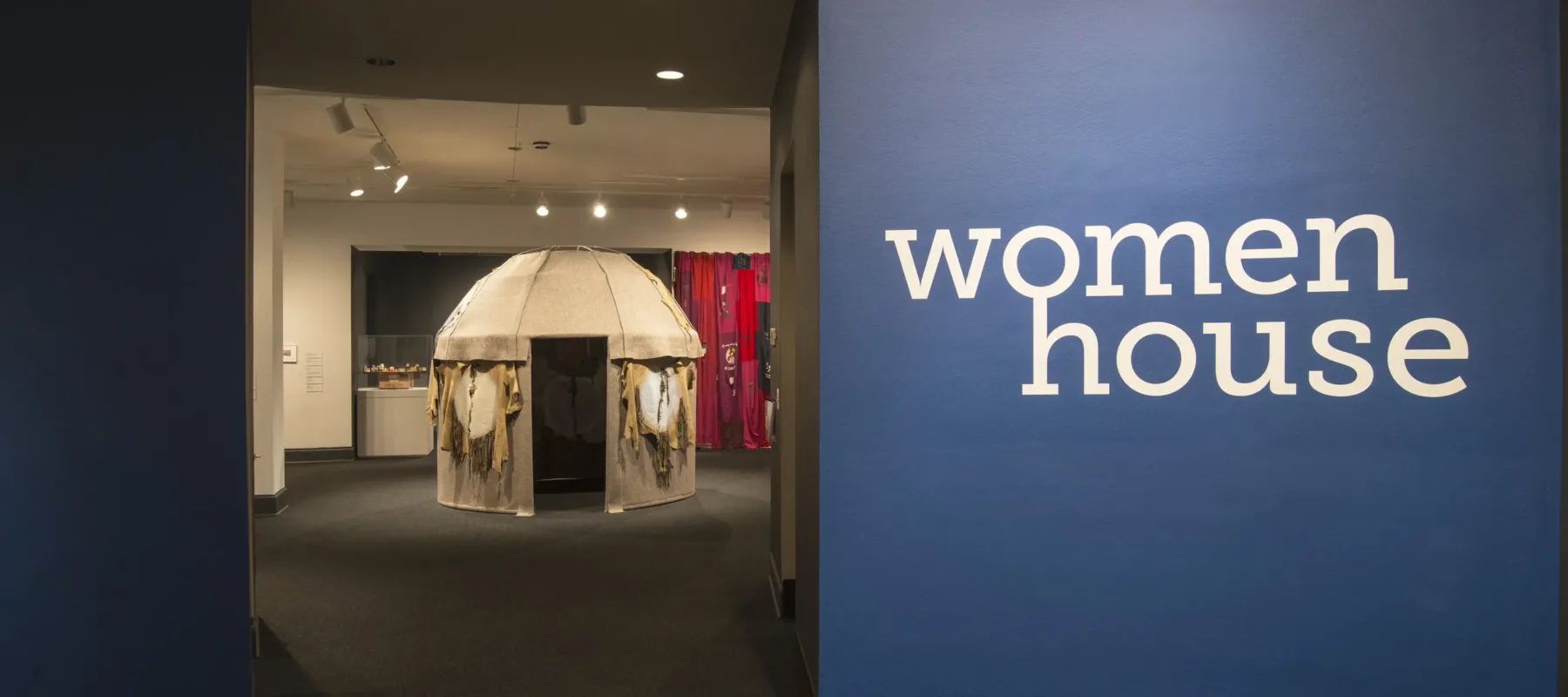Questions about a woman’s “place” resonate in our culture, and conventional ideas about the house as a feminine space persist. Global artists in Women House recast conventional ideas about the home through provocative photographs, videos, sculptures, and room-like installations. Louise Bourgeois and Laurie Simmons conceptualize the female body as the archetypal form of home.
Louise Bourgeois, Femme Maison, 1994
“Art is not about art. Art is about life, and that sums it up,” said Louise Bourgeois (b. 1911, Paris; d. 2010, New York City), whose traumatic childhood experiences informed much of her work. Bourgeois created her own formal language to express her emotions, returning to the same themes repeatedly throughout her career. One of her most common subjects were nude women whose heads have been replaced by houses, which address themes of domesticity and female identity. She first employed with this motif in the 1940s in a series of paintings titled “Femme Maisons” (women houses).
One of Bourgeois’s women houses on view is a small, snowy marble sculpture showing a woman seemingly stuck within the structure of a home. Her head dips toward the ground and her legs are positioned higher than her head. Her torso and arms are completely hidden, making the figure seem altogether immobile and positioned at what would be an uncomfortable angle.

Laurie Simmons, Walking House, 1989
Laurie Simmons (b. 1949, New York City) is best known for her eerie and unsettling photographs of anthropomorphized objects, particularly dolls, that explore the relationship between human and object in consumerist culture. Her series “Walking and Lying Objects” (1987–1991) features images of various everyday items fixed atop human legs. The first photograph in the series, Walking Camera I (Jimmy the Camera), features one of Simmons’s friends dressed in a camera costume. For her other photos, she attached doll legs to miniature household objects, including an hourglass, purse, and toilet.
In the large-scale photograph Walking House, a woman appears to have been consumed by a typical suburban home. Her only recognizably human features are her slender legs, which appear to be in motion. Simmons wanted the house on legs to represent an iconic American dream home. She says, “Starting in post-World War II America up to the present, the way a person lives is so identified with who that person is. We live in a blazingly consumer-oriented society, where the things around us control us, and I think these images are about the way a person can be subsumed by what’s around them.”

Both Walking House and Femme Maison conflate the female body with domestic architecture. In each work, the woman is inseparable from the house—both metaphorically and literally.
Visit the museum and explore Women House, on view through May 28, 2018.
